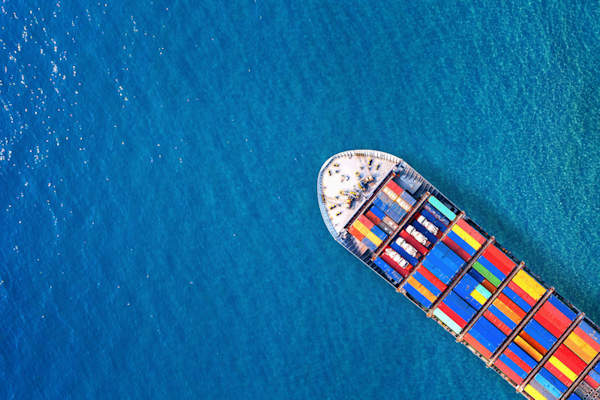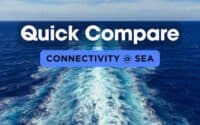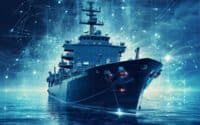Optimizing Commercial Ship Operations through Digital Solutions and Strategic Approaches

Commercial ship owners, in particular, face a multitude of challenges ranging from fluctuating fuel prices to maintaining ship integrity and managing crew dynamics. In this age of rapid technological advancements and digital revolutions, the key to addressing these challenges lies in leveraging technology and meticulous strategic planning.
* Please send feedback/suggestions to editor @ shipuniverse.com
Digital Solutions for Modern Shipping
The digital age offers a beacon of hope for the shipping industry. With an array of technological tools at their disposal, ship owners are poised to reinvent and optimize their operations, ensuring sustainability, profitability, and efficiency.
Digital Monitoring – two words that have transformed industries worldwide. In the maritime sector, this concept refers to the real-time tracking and assessment of various ship performance metrics, offering insights that were previously hard to grasp.
Central to this revolution is the deployment of sensors and the Internet of Things (IoT). From engine performance and fuel consumption to cargo conditions and hull integrity, sensors placed at critical points provide real-time data. This data, when processed and analyzed through IoT platforms, gives ship owners a detailed overview of their ship’s performance.
The advantages are manifold:
- Proactive Maintenance: With continuous monitoring, potential issues can be identified and addressed before they escalate, reducing downtime and repair costs.
- Fuel Optimization: By understanding fuel consumption patterns and vessel performance in various conditions, ship owners can make informed decisions to maximize fuel efficiency.
- Safety Enhancements: Sensors can detect abnormalities that might lead to accidents, allowing for preventive measures, ensuring the safety of the crew and cargo.
Automated Systems
Automation in shipping isn’t a futuristic concept; it’s today’s reality. Through advanced software and hardware systems, various ship functions, once manually controlled, are now automated, streamlining operations and reducing human error.
A significant impact of automation is on crew requirements. Automated systems can manage tasks like navigation, ballasting, or cargo handling, potentially reducing the need for specialized crew members. This not only leads to cost savings but also minimizes human-induced errors, enhancing operational efficiency.
The maritime industry has witnessed several instances of ships incorporating automation. One notable example is the ‘Yara Birkeland’, touted as the world’s first fully electric and autonomous container ship. Set to operate in Norway, this vessel epitomizes the potential of automation, offering a glimpse into the future of shipping.
Strategic Collaborations in the Maritime Industry
In the vast oceans of the maritime world, no ship sails alone. Today, more than ever, collaboration is not just about camaraderie; it’s about strategic business growth. Collaborative approaches such as joint ventures and partnerships are becoming increasingly vital for commercial ship owners looking to navigate the complexities of the global shipping landscape.
Joint Ventures and Partnerships
The concepts of joint ventures and partnerships are not new to business. However, in the maritime sector, they’ve taken on heightened significance. These collaborative models involve two or more entities coming together for mutual benefit, combining resources, expertise, and operations to achieve specific goals.
The benefits of such collaborations are abundant:
- Shared Operational Costs: By pooling resources, companies can significantly reduce individual expenditures, achieving economies of scale in areas like fuel purchasing, maintenance, and staffing.
- Expertise Exchange: Partners can tap into each other’s specialized knowledge and skills, thereby enhancing operational efficiency and innovation.
- Increased Market Reach: Collaborations often lead to an expanded client base, route networks, and operational territories.
Taking a dive into real-world scenarios, one can look at the collaboration between Maersk and MSC known as the 2M Alliance. Initiated in 2014, this partnership allowed the two shipping giants to combine their vast networks and services. Through shared operations and vessel exchanges, the alliance enabled both companies to optimize their service offerings, reduce costs, and improve competitiveness in the face of industry challenges.
Charter Strategies for Ship Owners
Chartering – an age-old maritime practice, yet its significance has never dimmed. In essence, chartering involves the lease of a ship for a specific period or voyage. For ship owners, this becomes an avenue to ensure their vessels remain operational, generating revenue even when they might not have cargo to transport.
To truly benefit from chartering, ship owners must refine their chartering strategies. Effective chartering involves:
- Market Analysis: Understanding demand and supply dynamics, freight rate trends, and seasonal fluctuations.
- Vessel Positioning: Strategically positioning vessels in regions with high charter demand.
- Contract Flexibility: Offering varied charter periods – short-term, long-term, or voyage-based – based on market conditions.
Navigating Regulations: Environmental Compliance
As ships cruise across international waters, they’re not just navigating the physical challenges of the sea but also the intricate web of international maritime regulations. With increasing global attention on environmental concerns, the maritime sector finds itself at the epicenter of significant regulatory shifts.
A prime example of this shift is the IMO 2020 sulfur cap. Established by the International Maritime Organization (IMO), this regulation mandates that ships must reduce their sulfur emissions by using fuel with a sulfur content of no more than 0.5%, a significant decrease from the previous limit of 3.5%. This initiative is part of a broader effort to combat marine pollution and promote sustainable shipping.
The implications of this regulation are profound:
- Operational Challenges: Ship owners need to either retrofit their vessels to accommodate low-sulfur fuels or invest in technologies like scrubbers to reduce sulfur emissions.
- Economic Impacts: The transition incurs costs, but non-compliance can lead to even more significant financial penalties.
- Market Dynamics: The demand for compliant fuels has influenced global oil markets, affecting pricing and availability.
For ship owners, ensuring compliance is not just a matter of regulatory adherence but also of business viability. Key strategies include:
- Continuous Monitoring: Employing sensors and digital solutions to monitor emission levels in real-time.
- Training: Ensuring crew members are well-versed with compliance requirements.
- Engagement: Actively engaging with industry associations and regulatory bodies to stay abreast of evolving regulations.
The Perils of Overcapacity
Overcapacity in the maritime industry refers to the situation where the supply of available shipping space exceeds the demand for it. This could mean operating vessels that aren’t fully loaded or having a fleet size that’s disproportionate to the cargo demand.
The repercussions of overcapacity are stark:
- Reduced Freight Rates: Too many ships vying for limited cargo can drive down freight rates, affecting profitability.
- Operational Inefficiencies: Running underloaded ships leads to wasted fuel and resources.
- Financial Strain: An oversized fleet means more maintenance, crew, and operational costs.
Tackling overcapacity requires a multi-faceted approach:
- Predictive Analytics: Utilizing advanced analytics to forecast demand and adjust operations accordingly.
- Demand Forecasting: Engaging in market research to anticipate fluctuations in cargo demand.
- Route Optimization: Strategically planning routes to maximize cargo loads and reduce empty voyages.
Additional Resources
Navigating Regulations: Environmental Compliance
- International Maritime Organization (IMO) Official Website:
- For information on the IMO 2020 sulfur cap and other maritime regulations.
- Search Term: “IMO 2020 sulfur cap official documentation”
- World Shipping Council:
- Provides insights into global shipping policies and environmental initiatives.
- Search Term: “World Shipping Council environmental regulations”
- Lloyd’s List:
- A leading source for maritime news and analysis.
- Search Term: “Lloyd’s List IMO 2020 implications”
The Perils of Overcapacity
- Clarksons Research:
- Offers comprehensive shipping data and market analysis.
- Search Term: “Clarksons Research shipping overcapacity report”
- The Journal of Commerce (JOC):
- Provides regular updates on shipping industry trends and challenges.
- Search Term: “JOC overcapacity in the maritime industry”
- Seatrade Maritime News:
- Covers the latest news and analysis for the global maritime industry.
- Search Term: “Seatrade Maritime overcapacity solutions”

Do you have a Maritime Product or Service that may be of interest to Shipowners? Tell us about it here!
Do you have feedback or insights? Please reach out to editor @ shipuniverse.com



